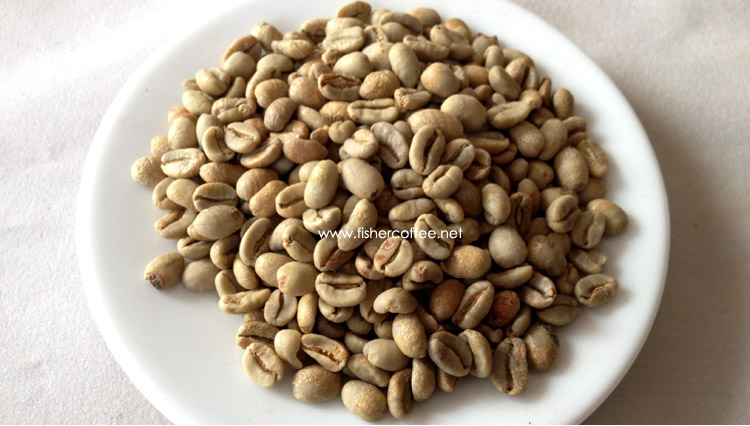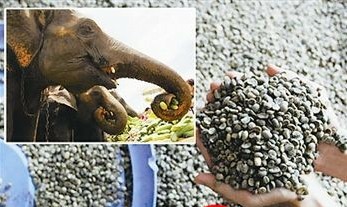Panamanian Emerald Manor-Esmeralda Manor Rose Summer Coffee Guatemala Rose Summer Coffee beans
Panama Emerald Estate
Panama Geisha Hacienda La Esmeralda
In the early years, most of the recognition of top coffee followed Japan, while Geisha swept the coffee world with hurricane-like power. This coffee revolution was fierce, which made the king and queen who had occupied the throne of coffee kingdom for a long time ~ Blue Mountain of Jamaica and Kena of Hawaii also have to retreat. This wild variety originally originated in Ethiopia has been valued in all major coffee producing areas after numerous battles. Its best spokesman is the "La Esmeralda" estate from Panama. Esmeralda Manor's Rosedale coffee is the most famous of the Rosedale varieties.
Panama Emerald Estate
In 1924, the Swede Harns. Elliot founded the esmerada farm, which was not a coffee farm but a pasture, 40 years later in 1964. Mr. Bideson's grandfather, Ruth Loveau. M. bideson bought esmerada farm in order to retire and have a place to live, grandfather lut ruff. Born in Sweden, Mr. Bidesson was president of the Bank of America and director of the United Nations Development Programme.
His son Blais. Mr. bidazon moved from california to panama in 1973, inherited his father's farm, changed most of the farm to coffee cultivation in 1987, and purchased machinery for refining coffee in 1994 to create a brand investment. Mr. and Mrs. Bideson raised three children, Eligu (born Philadelphia, 1966), Richelieu (born Sweden, 1967) and Daniele (born Panama, 1974), while the coffee farm was established.
In 1996 Braith and Rachel visited a farm for sale in the Haramijon area of the Boketty Valley and were attracted by the beauty of the farm and immediately bought it. This is Esmeralda? Harami Jonon Farm, third son Danielle. Mr. Bideson planted the coffee world's attention in this farm-Geisha coffee!
Panama rose growing altitude: 1,500-1,650 meters, unique growth environment makes it unique flavor:
Dry fragrance: tea fragrance, flower fragrance (magnolia flower, tulip) vanilla plant, milk fragrance, brown sugar sweet, high champagne and aroma rise.
Wet fragrance: apricot, caramel, milk, flower fragrance.
Sip: Oil texture is good, delicate pear mountain special tea feeling, high-grade white wine astringent but immediately turned into a delicate smooth Body full of mouth.
Berry candy and spice sweet intertwining, accompanied by floral emission, aftertaste full of floral, sweet fruit and body is quite persistent, the lower the temperature, the more delicate the acid.
La Esmeralda has so far won 12 coffee competitions and three online public bidding records: $21 in 2004,$50.25 in 2006 and $130 in 2007! Of course, other countries have also bid a pound of good coffee close to 50 dollars (Brazil CoE champion Fazenda Santa Inês in 2005), El Injerto in 2008 Guatemala CoE champion 80.20 dollars; but you pay attention to the time point, that is, La Esmeralda bid record, before no bid price surpassed her, then, but she will surpass others, saying she is the record maker, no fluke!
Café de la Rose Esmeralda Farm Brilliant Experience
Panama's highest grade coffee ranked first for four consecutive years in 2004, 2005, 2006 and 2007!
SCAA World Coffee Cup ranking 2005, 2006, 2007 for 3 consecutive years No. 1!
Tropical Rainforest Conservation Group coffee quality cup test ranking 2004, 2006, 2007 No. 1!
Rose Summer Coffee Guatemala Rose Summer
Guatemala Acatenango Gesha.
In 2007, Guatemala added an eighth coffee-producing region,Acatenango Valley(R), which we translated as "Acatilan Fruit Region."
In 2007, Anacafé(Guatemala Coffee Association) not only promoted it at SCAA, but also organized a special presentation to international judges during the national competition. In the past, Guatemala claimed to have seven major producing areas, not only to distinguish characteristics, but also to let buyers and consumers good memories, 7 regions of Antigua, the slight plateau, Lake Attitan, Coban rainforest, etc., each area can find excellent manor and good coffee with local characteristics.
Acatenango is located in Chimaltenango province of Guatemala, where more than 5000 hectares of coffee plantations are fertile volcanoes, mainly located in two volcanic mountains, and almost all of them have forests and shade trees. As can be seen from the photos above, almost all of the estates are planted in shade, mainly bourbon and some Catuai and Caturra.
The two volcanoes of Acatenango are Volcan de Fuego and Volcan Acatenango. Acatenango is the third highest volcano in Central America, and beyond Fuego is the Attitan Lake. Annual rainfall in this area is 48 to 72 inches, annual average temperature is 14 to 31 degrees C, temperature difference is large enough, so the bean density is tight, which is helpful for flavor. Coffee harvest season is mainly from mid January to March. Kaqchiquels still live in the area and maintain traditional farming methods; there are about 4,000 farmers in the area, and coffee cultivation dates back to 1880
Important Notice :
前街咖啡 FrontStreet Coffee has moved to new addredd:
FrontStreet Coffee Address: 315,Donghua East Road,GuangZhou
Tel:020 38364473
- Prev

The unique floral flavor of boutique coffee beans from Geisha, an Ethiopian region in Africa
The species of Geisha was discovered in the Rose Summer Forest of Ethiopia in 1931 and sent to the Coffee Institute in Kenya; it was introduced to Uganda and Tanzania in 1936, in Costa Rica in 1953, and Panama was introduced in the 1970s by Francesca of Dongba Seven Farm Garden. Mr. Serraxin got the seeds from CATIE in Costa Rica and started growing Rosa Coffee because
- Next

The principle of the formation of black ivory coffee also known as ivory dung coffee beans and the preparation of ivory dung coffee in Asia
Black Ivory Coffee (Black Ivory Coffee), also known as Elephant dung Coffee, is made from coffee beans digested and excreted by Thai elephants and produced in the Golden Triangle Asian Elephant Base. Enzymes in elephants break down proteins in beans during digestion, making them almost free of the bitterness of ordinary coffee. The coffee is produced and wholesale by Black Ivory Coffee. Due to the supply
Related
- Beginners will see the "Coffee pull flower" guide!
- What is the difference between ice blog purified milk and ordinary milk coffee?
- Why is the Philippines the largest producer of crops in Liberia?
- For coffee extraction, should the fine powder be retained?
- How does extracted espresso fill pressed powder? How much strength does it take to press the powder?
- How to make jasmine cold extract coffee? Is the jasmine + latte good?
- Will this little toy really make the coffee taste better? How does Lily Drip affect coffee extraction?
- Will the action of slapping the filter cup also affect coffee extraction?
- What's the difference between powder-to-water ratio and powder-to-liquid ratio?
- What is the Ethiopian local species? What does it have to do with Heirloom native species?

